I should start by being honest – I didn’t know what to expect when it came to diving Ontario Parks. In fact, the only thing I did know was that most of my childhood summers were spent in these Parks with my head underwater, snorkeling, camping and imagining that I was a fish.
I’m adventurous about a lot of things, water being one of them, so when the opportunity came to scuba dive and photograph with Ontario Parks, I jumped at the opportunity.
When it comes to getting outside and immersed in nature, Ontario is at the top of the list. This province is a wilderness playground of trails and camping. It has some of the most beautiful expanses of forest and lakes in the country. So it’s no surprise really that close to 40% of Canada’s population call this local home.
Not only does Ontario boast magnificent nature, but it’s hundreds of thousands of lakes make it a real treat for those who love the water. The world-famous Great Lakes even allow divers to catch a glimpse of Ontario from a completely different point of view – one of water and wonder.
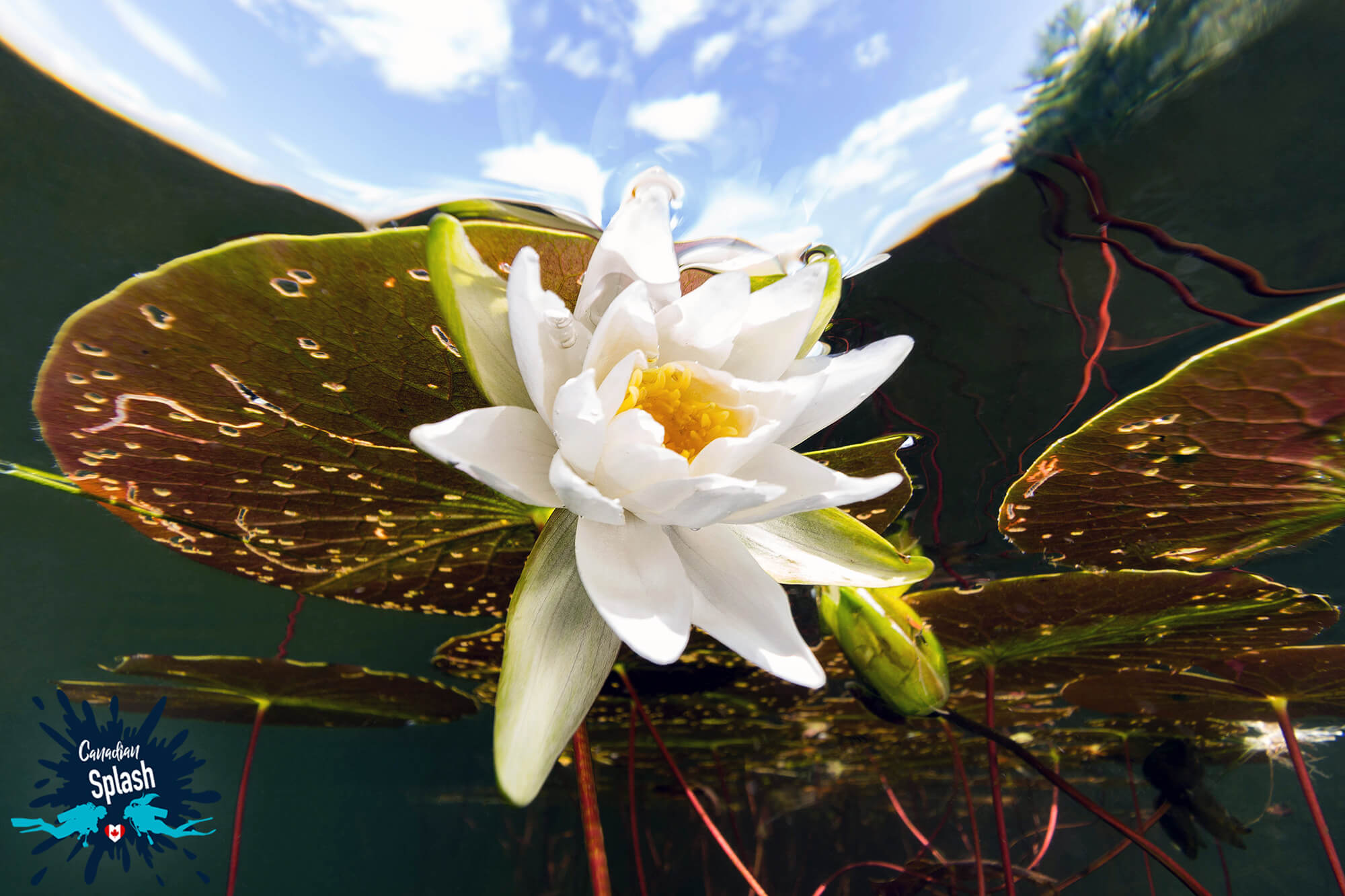
Ontario Parks first began in 1893 with the creation of Algonquin Provincial Park, and since then has grown and prospered for over 125 years. Currently, with 330 provincial parks spanning across the province, Ontario Parks is at the heart of Ontario’s nature scene. They are the largest provider of outdoor recreation experiences in the region.
While Ontario Parks is well-known for many outdoorsy things, scuba diving is not one of them – that is until now.
To those who have never dived, the idea of heading underwater in a dark and dismal freshwater lake might seem like an eerie or boring prospect. But for divers, the picture is much different.
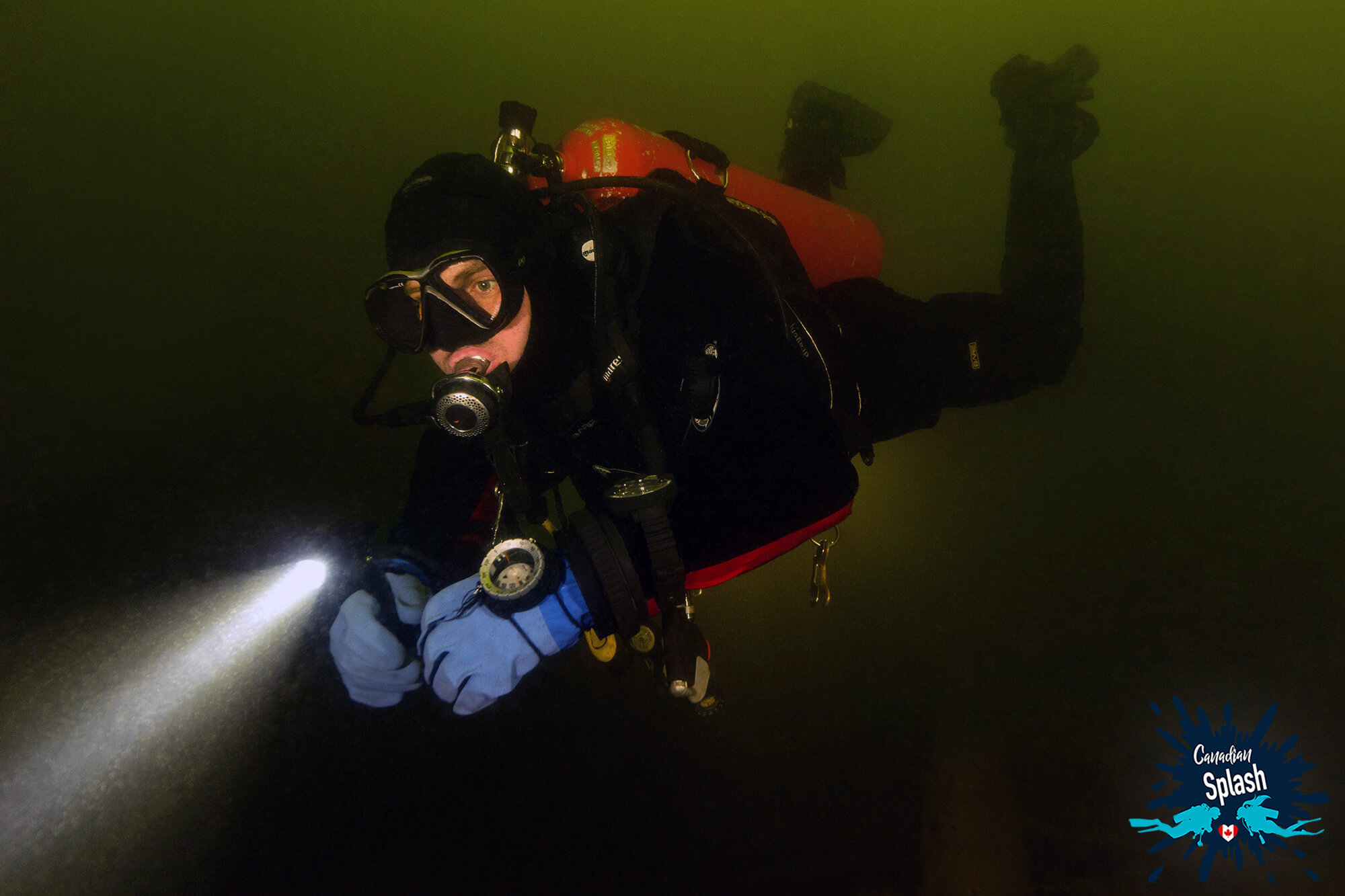
Hidden dive sites are everywhere, and the protected lakes and wetland environments in Ontario Parks, are unsung diamonds in the rough.
Over the course of the summer months, Dive Buddies 4 Life has joined forces with Ontario Parks to explore and photograph a few of these stunning underwater locations. While we weren’t sure what we would find at first, looking back on our dives in retrospect, these bountiful freshwater ecosystems were a hub of activity for all things small. We were enchanted by the park’s aquatic sights.
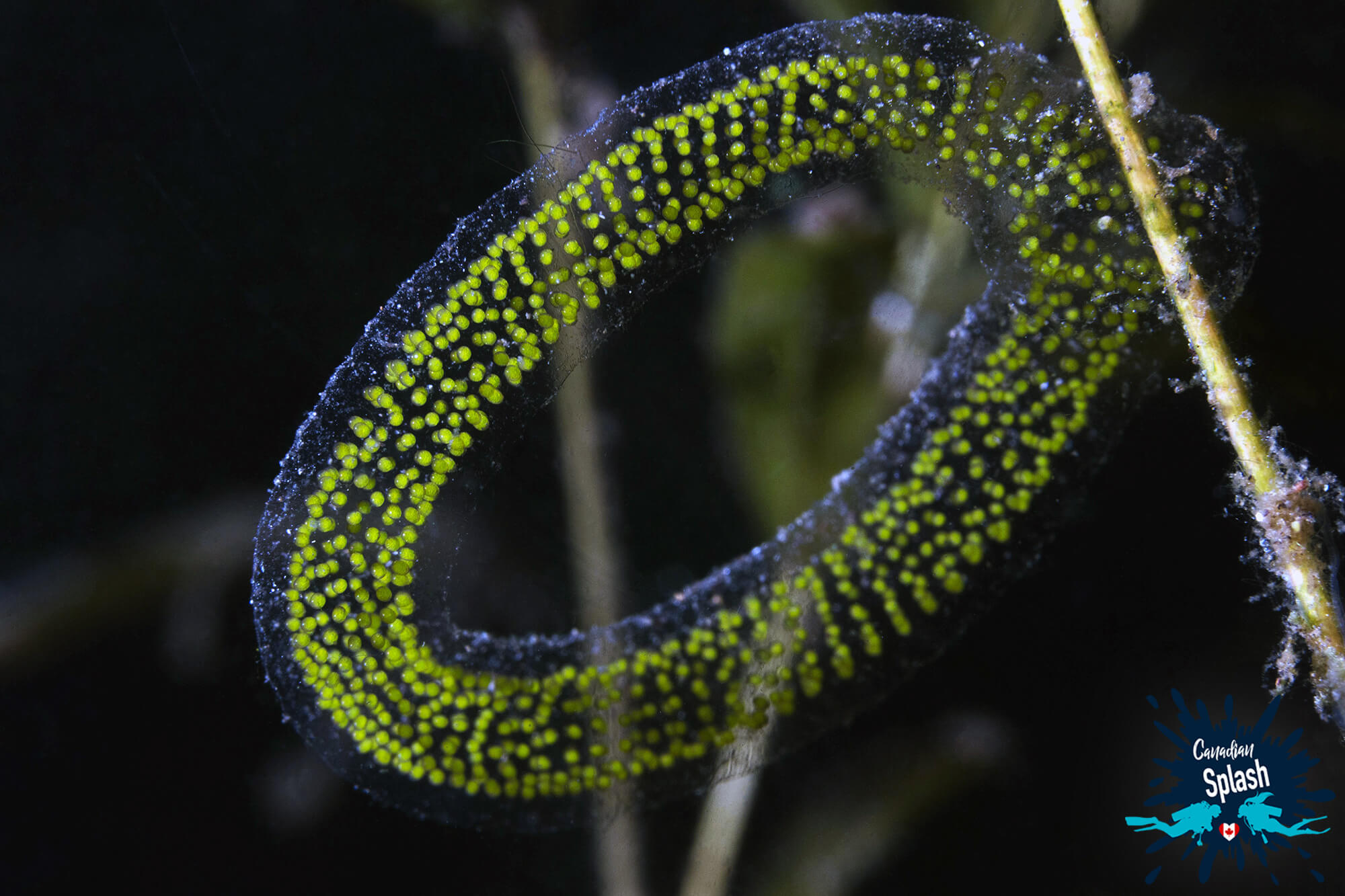
Marten River Provincial Park is a 400-hectare recreational park that lies off the Trans-Canada Highway (Hwy 11). Due to its location, the park itself is often called the southern gateway to Temagami and bridges a network of pristine waterways. Having comfort stations, beaches, running water, laundry facilities and 192 non-electrical and electrical sites, this Ontario Park, can accommodate anything from a small tent to large trailer.
The park was first established for camping in around 1925 on the “Ferguson Highway,” a northern settlement road linking the mining town of Cobalt and North Bay.
Interesting Information: Marten River is named after the Pine Marten (also known as the American Marten), a handsome member of the weasel family.
Like much of the north, Marten River Provincial Park has an impressive array of old-growth forests. In fact, if visitors head out and hike the parks Transition Trail, they can glimpse an impressive 350-year-old White Pine. As you can imagine, it was these ancient pinery trees that once drew lumberjacks to the area, and hence Marten River has a pretty interesting 19th-century logging history.
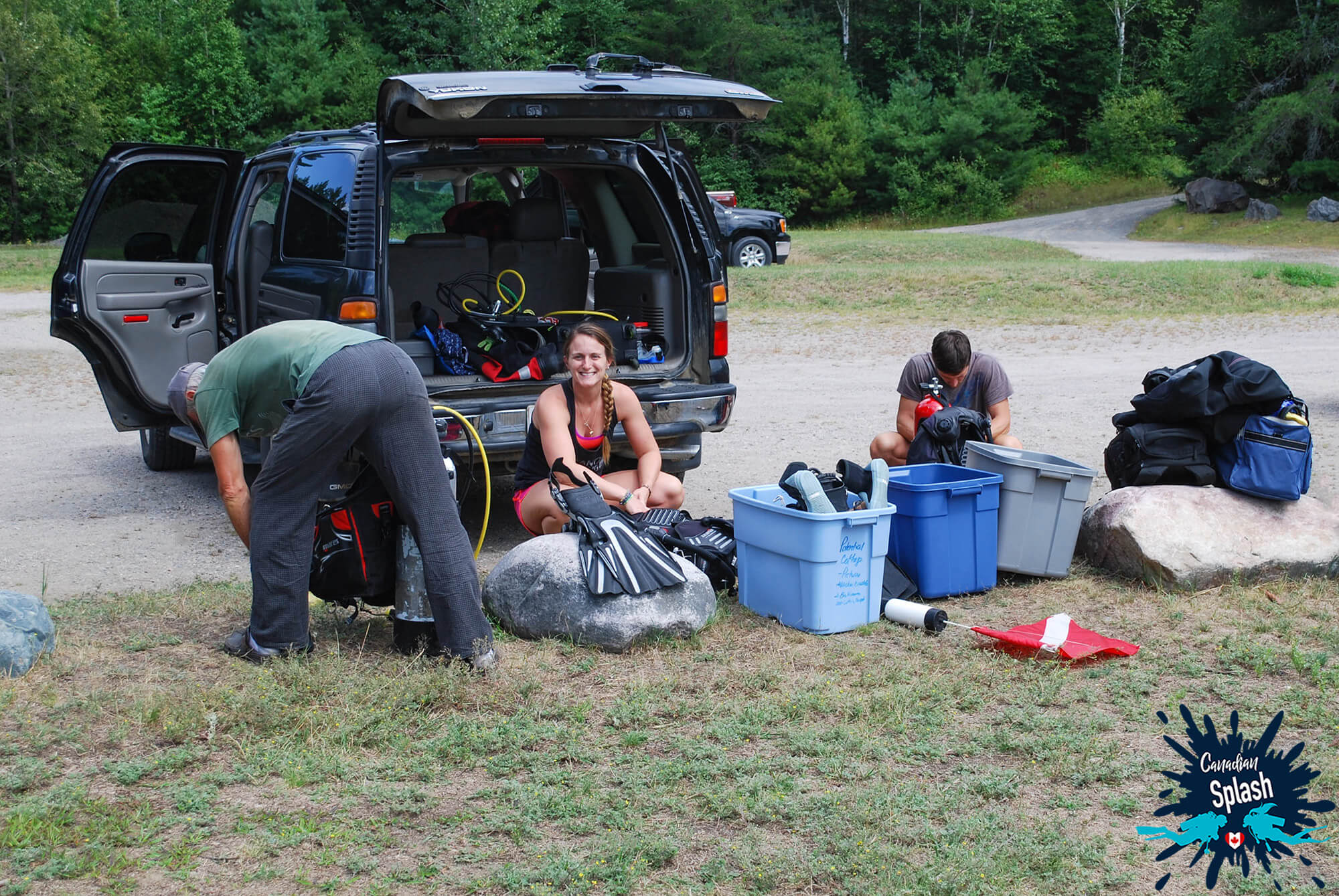
Scuba Diving Marten River Provincial Park
Extensive logging history aside, Marten River itself is part of a chain of interconnected lakes. Thanks to these lakes, the region is a canoe, boater and angler haven. The river holds fish species such as Northern Pike, Pumpkinseed, Rock Bass, Smallmouth Bass, Walleye and Yellow Perch.
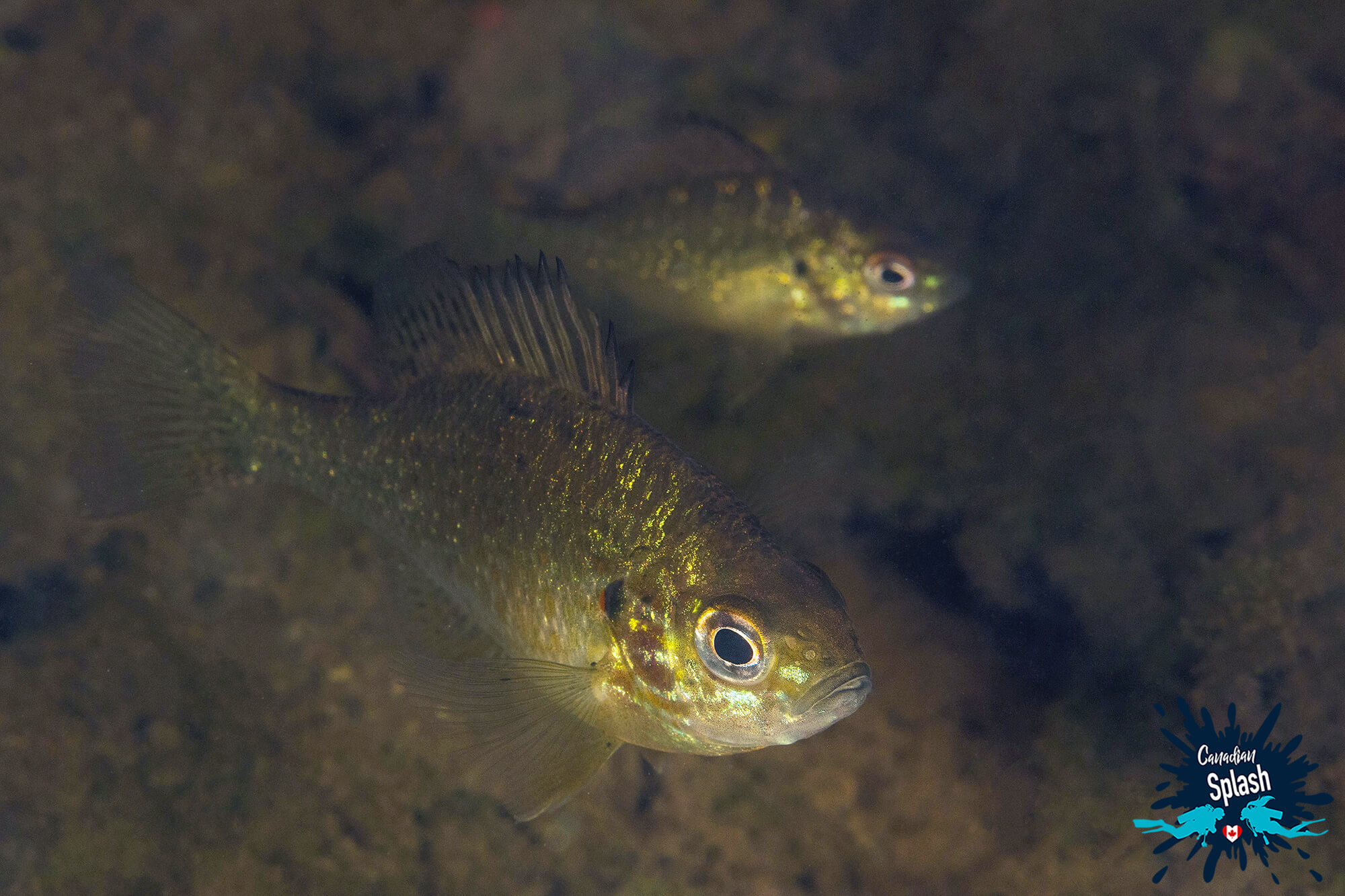
Diving in Marten River Provincial Park can be done from the day-use beach. Divers can park in the gravel lot and use the picnic tables for equipment set up and break down.
Looking out at the water from shore, scuba divers can either dive to the right, towards the bridge, or to the left point, which heads towards the logging camps cradling the shore.

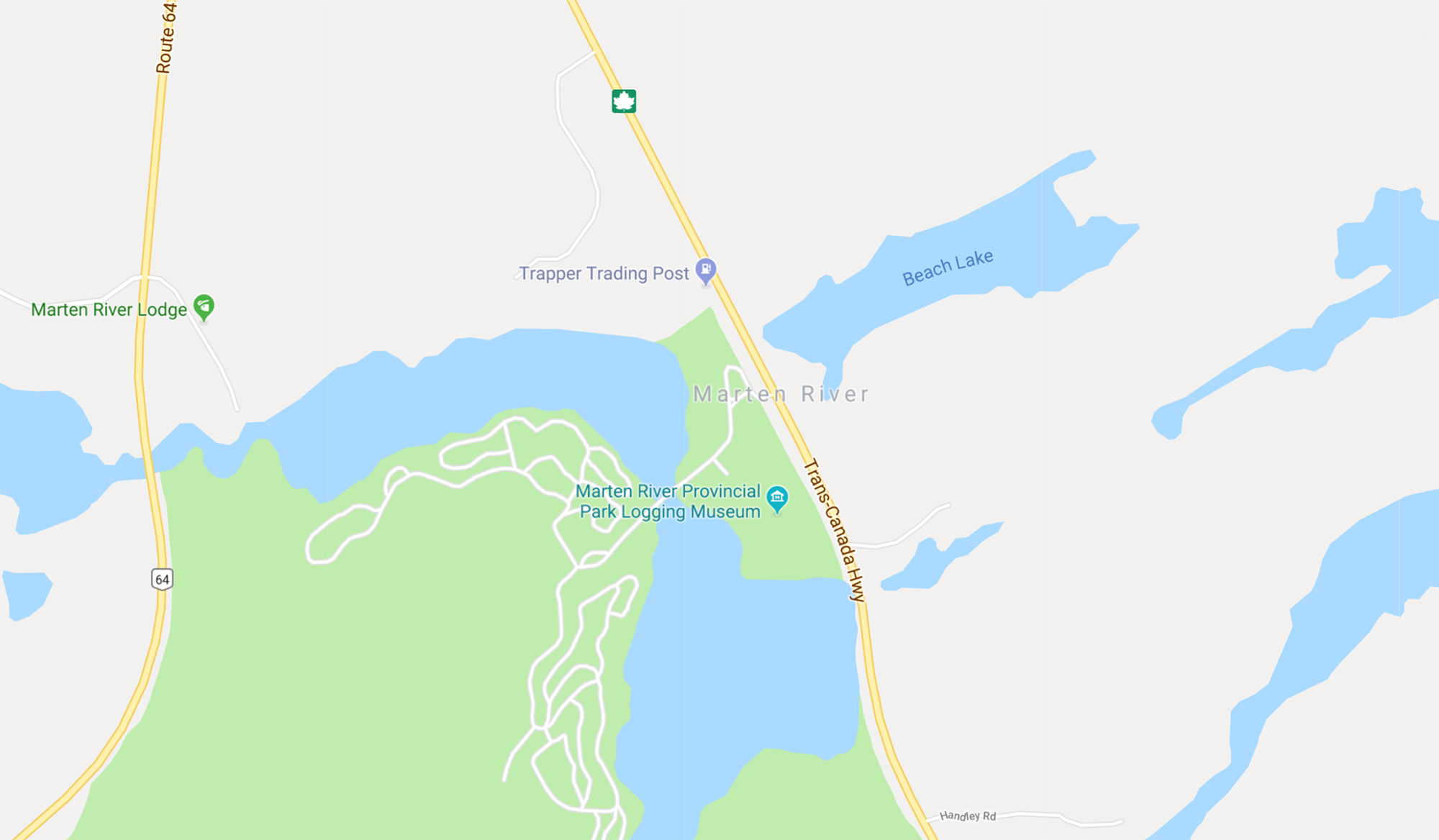
Where to Dive in Marten River Provincial Park
GPS Coordinates: 46.731304, -79.803400
Address: 2860 ON-11, Marten River, ON P0H 1T0, Canada
Park and dive from the day use beach with a dive buoy.
Once underwater the river shows in shades of brown and rust-colored hues.
The riverbed of Marten is made up of mucky silt in most areas. Heading towards the bridge, divers will find coarser gravel peppered with the occasional larger rock. Burrowed in the muck and gravel small bugs and beasts make their home. Move slowly and look around carefully as sometimes aquatic life is so small it’s barely visible – like this highlighter orange water mite (Hydracarina), a benthic species of arthropod.

Overall Marten River is a very shallow body of water. While diving there we found it hard to break depths of 4 meters (15 feet).
Some of the deeper and species-rich areas we found were located just on the other side of the park bridge. To get there scuba divers need to pass beneath the bridge and through the narrow rocky channel. Once on the other side, to the left is a shallow wetland area and on the right, there is a rocky drop off with lures and things scattered in the empty pockets.
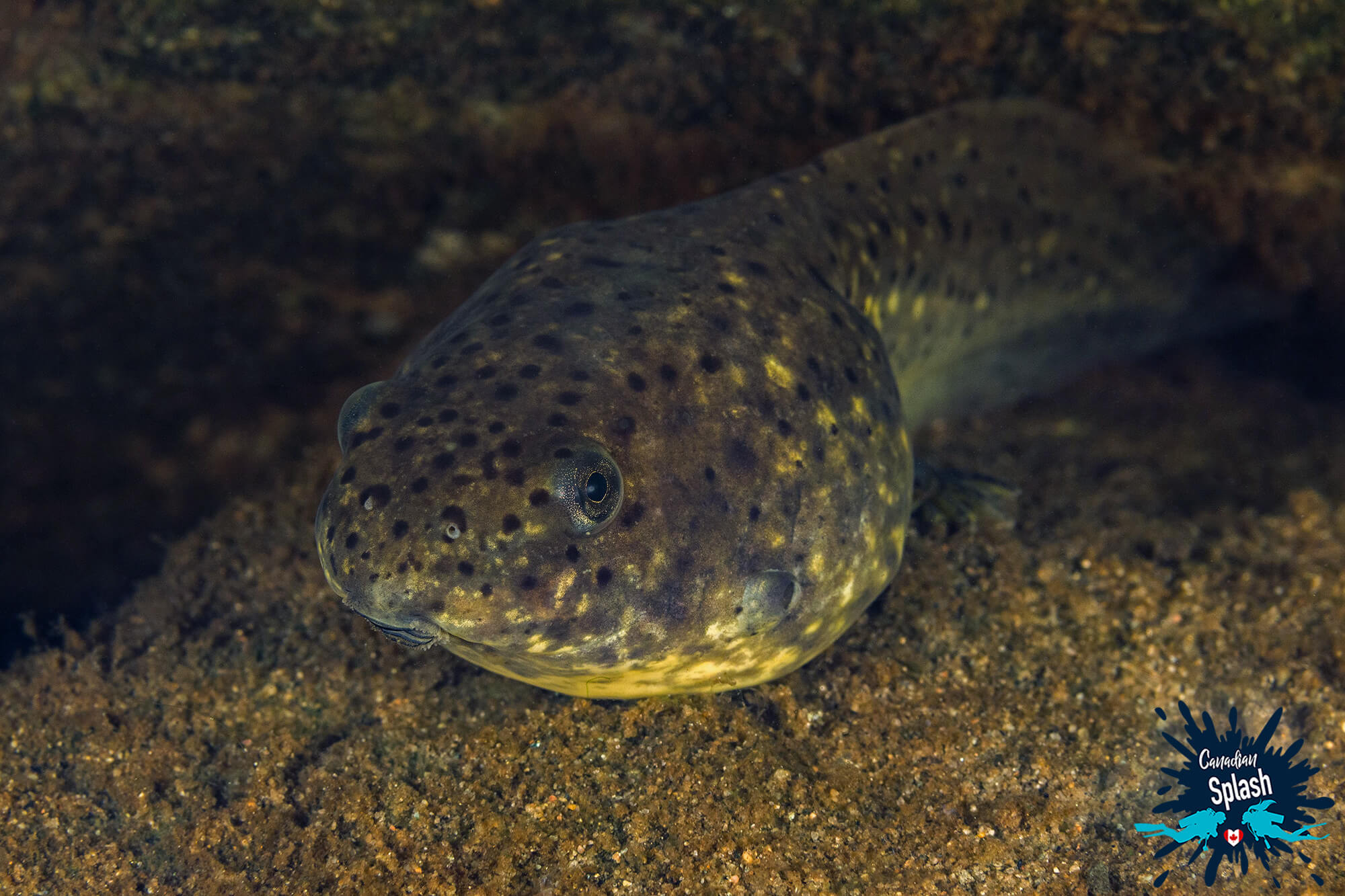
One thing worth noting is that this river is small, shallow and busy with boat traffic. This means that carrying a surface marker to alert boaters of diver presence is a safety necessity. A second safety note is when traveling beneath the bridge; because of boat traffic passing through the narrows and the occasional fisherman, we advise surface swimming through the narrows to avoid any problems.
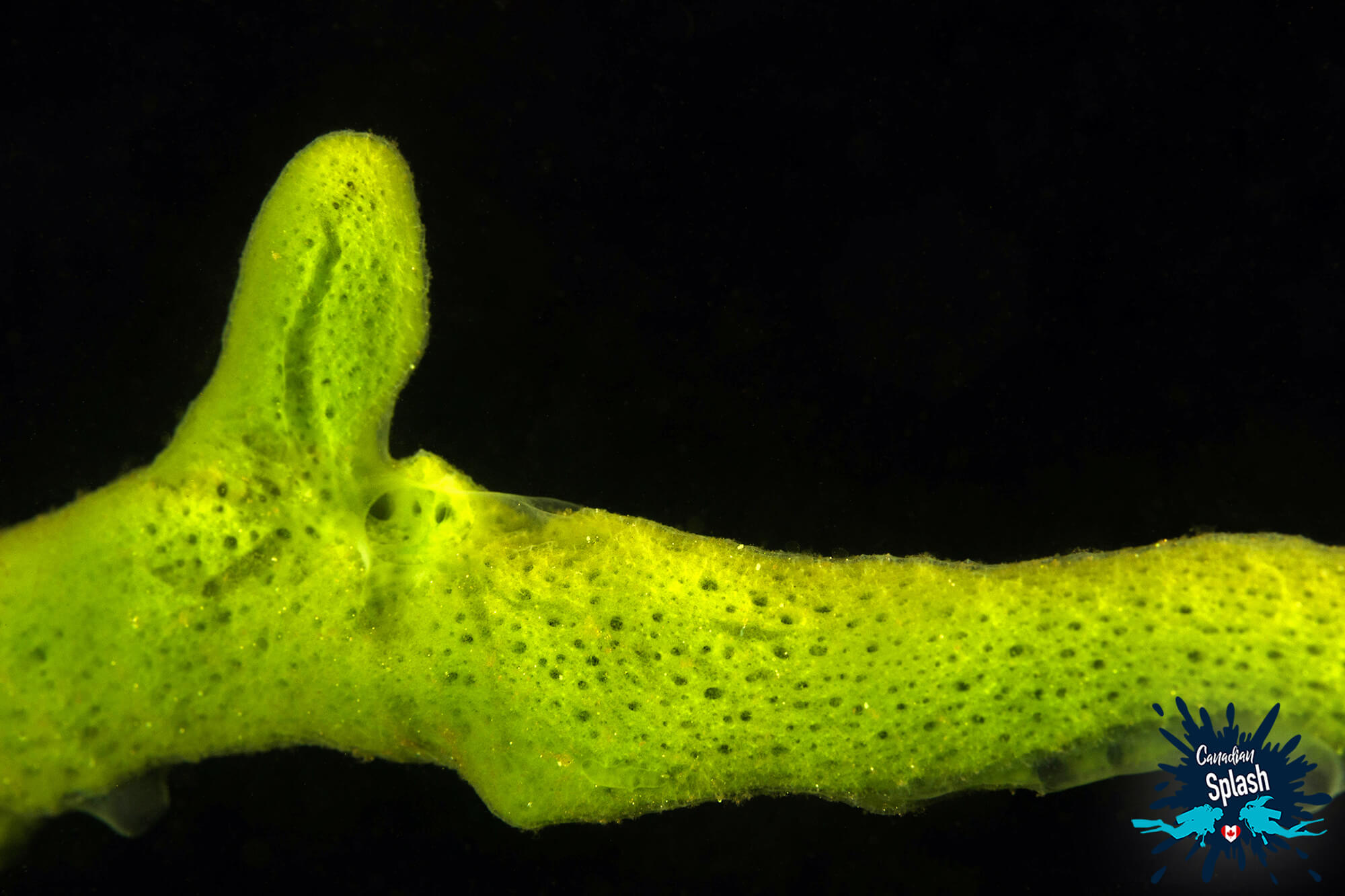
Finlayson Point Provincial Park is a 47-hectare park surrounded by the lush waters of Lake Temagami. The park is located on a peninsula south of the Township of Temagami, surrounded by trees, islands, and majestic cliffs. The campground is made up of electrical and non-electrical sites as well as one cottage accommodation, all of which are a short walk to the water.
Together the Township of Temagami and Finlayson Point are part of the Lake Temagami Skyline Preserve. The Skyline Reserve is a unique feature to Lake Temagami protecting the ring of old-growth red and white of pines surrounding Lake Temagami. This agreeance was not created by the government, but by the lake’s property holders and local pine sawmills in 1935.
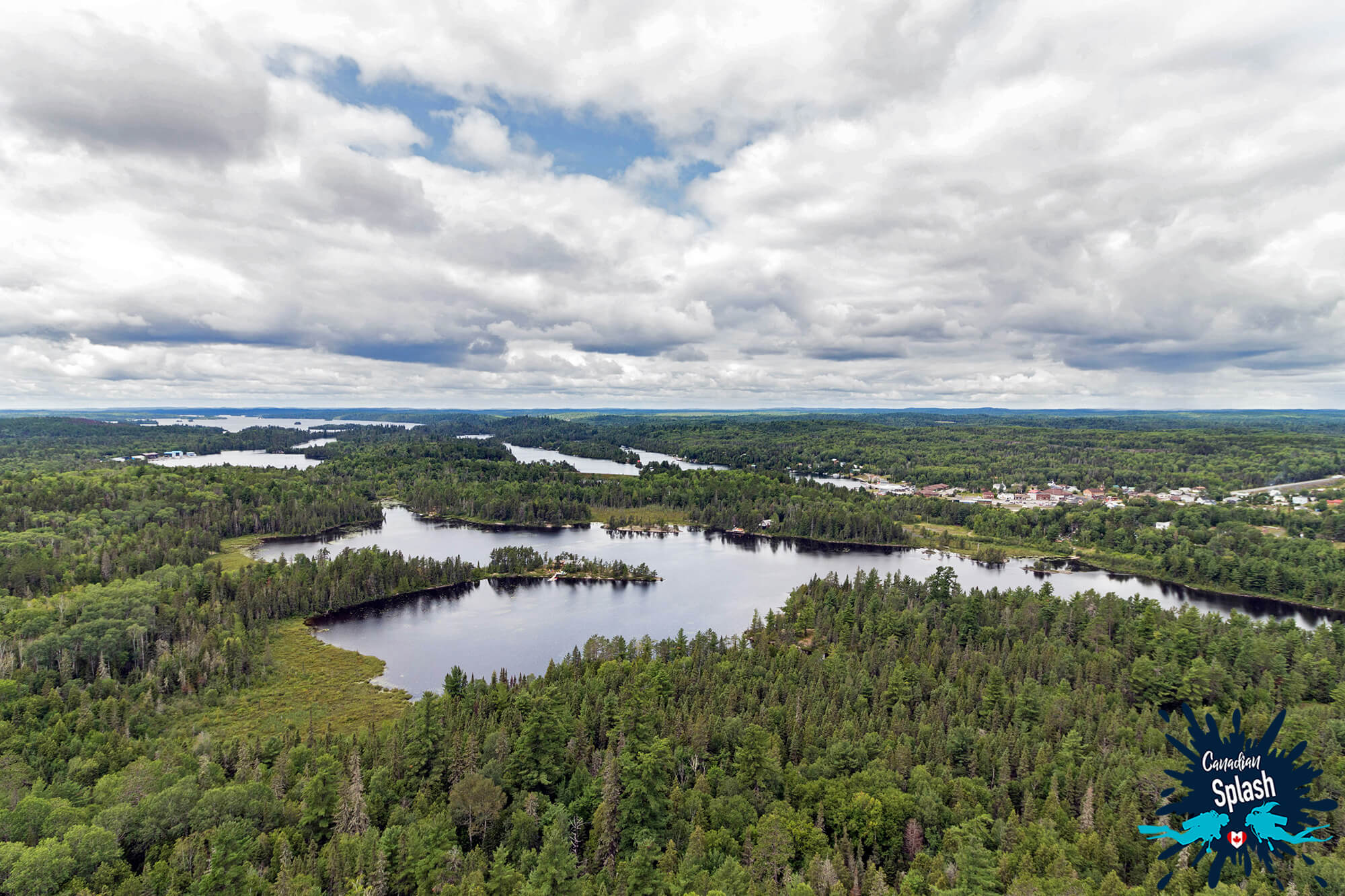
Scuba Diving Finlayson Point Provincial Park
Divers in search of watery solace in northern Ontario – head to Temagami – the lakes are some of the clearest in the region.
Lake Temagami is a huge sprawling lake covering 45 kilometers north to south and 35 kilometers east to west. Made up primarily of inlets, channels and arm-like spurs jetting out from its center, there are literally hundreds of miles of shoreline to explore. It’s also a busy region. Fishing boats, pontoon boats, and floatplanes are constantly buzzing around the lake.

Finlayson Point Provincial Park has an interesting dive site just to the left of the one of the beach. If your campsite, like our, is near the beach area, divers can suit up and walk to the entry point. At the beach, divers can finish kitting up in the sandy shallows and head left around the point to a rocky escarpment which drops off to 12 meters (40 feet).
The dive site and drop off runs for just over 100 meters and divers can follow it as it tapers shallower into a small sheltered bay. We did our dive by walking and entering at the beach and getting out at one of the small boat launching spots across from the many campsites.
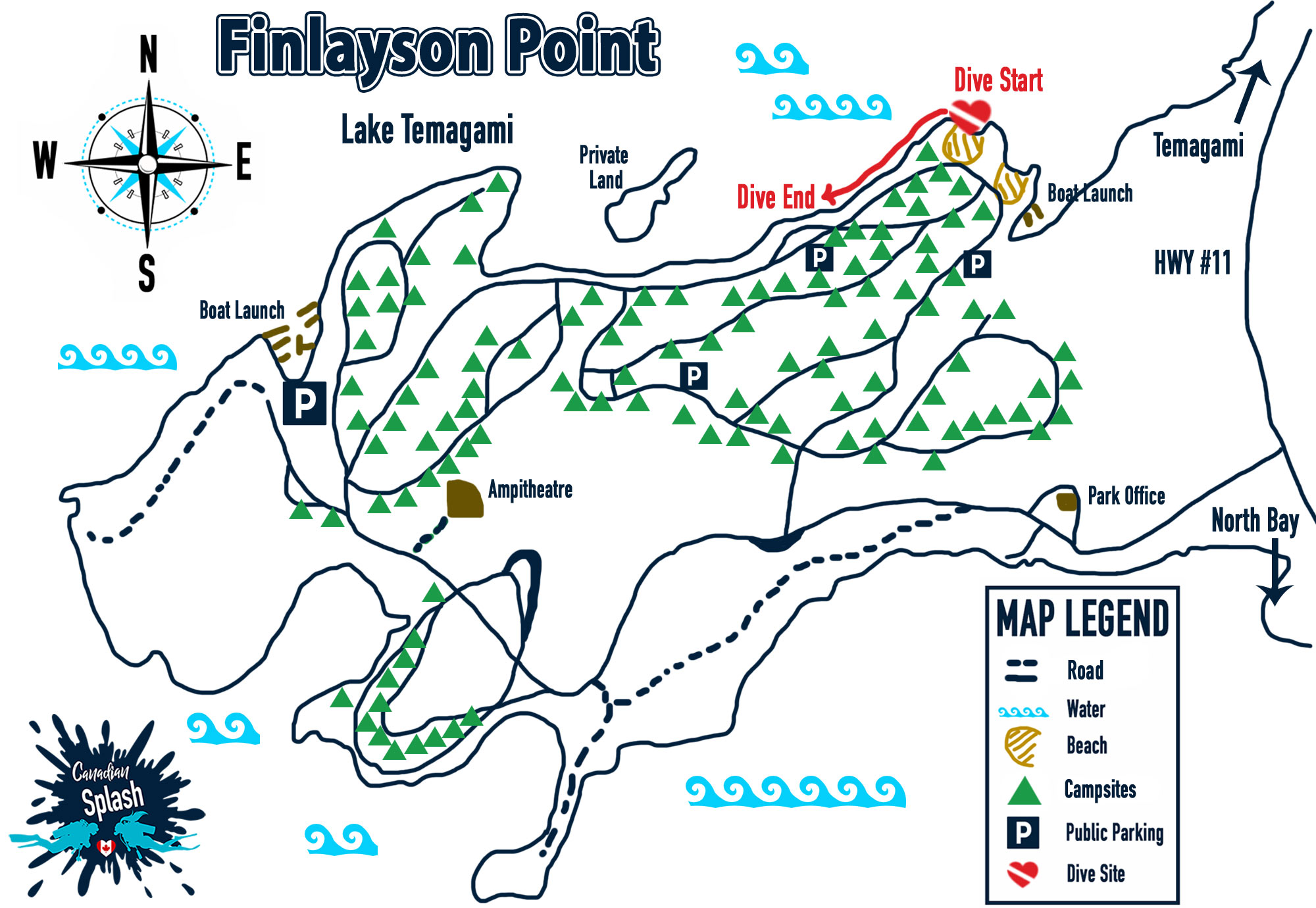
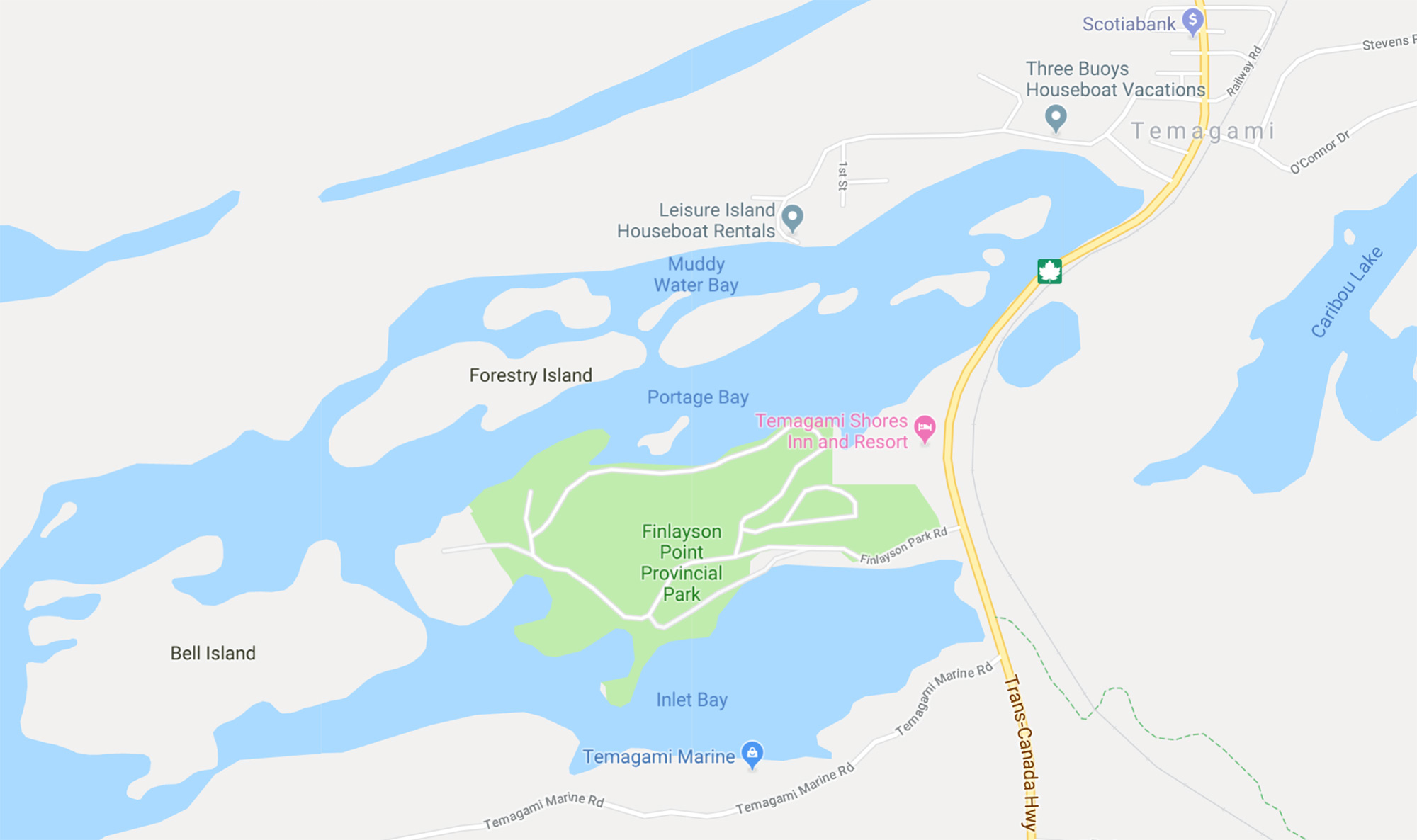
Where to Dive in Finlayson Point Provincial Park
GPS Coordinates: 47.057410, -79.801359
Address: 24 Finlayson Park Rd, Temagami, ON P0H 2H0, Canada
Dive from the beach and head left around the point.
First starting out, divers will find the outer extremity of the beach is riddled with plants and small fish. At the point where sand meets rock, a gradual drop off can be found.
The drop off consists of a rocky ledge transitioning from the warm shallows past a thermocline to the colder darker depths. The rock wall bottoms out at 12 meters (40 feet) and from there a silty mud plain continues towards the middle of the lake.
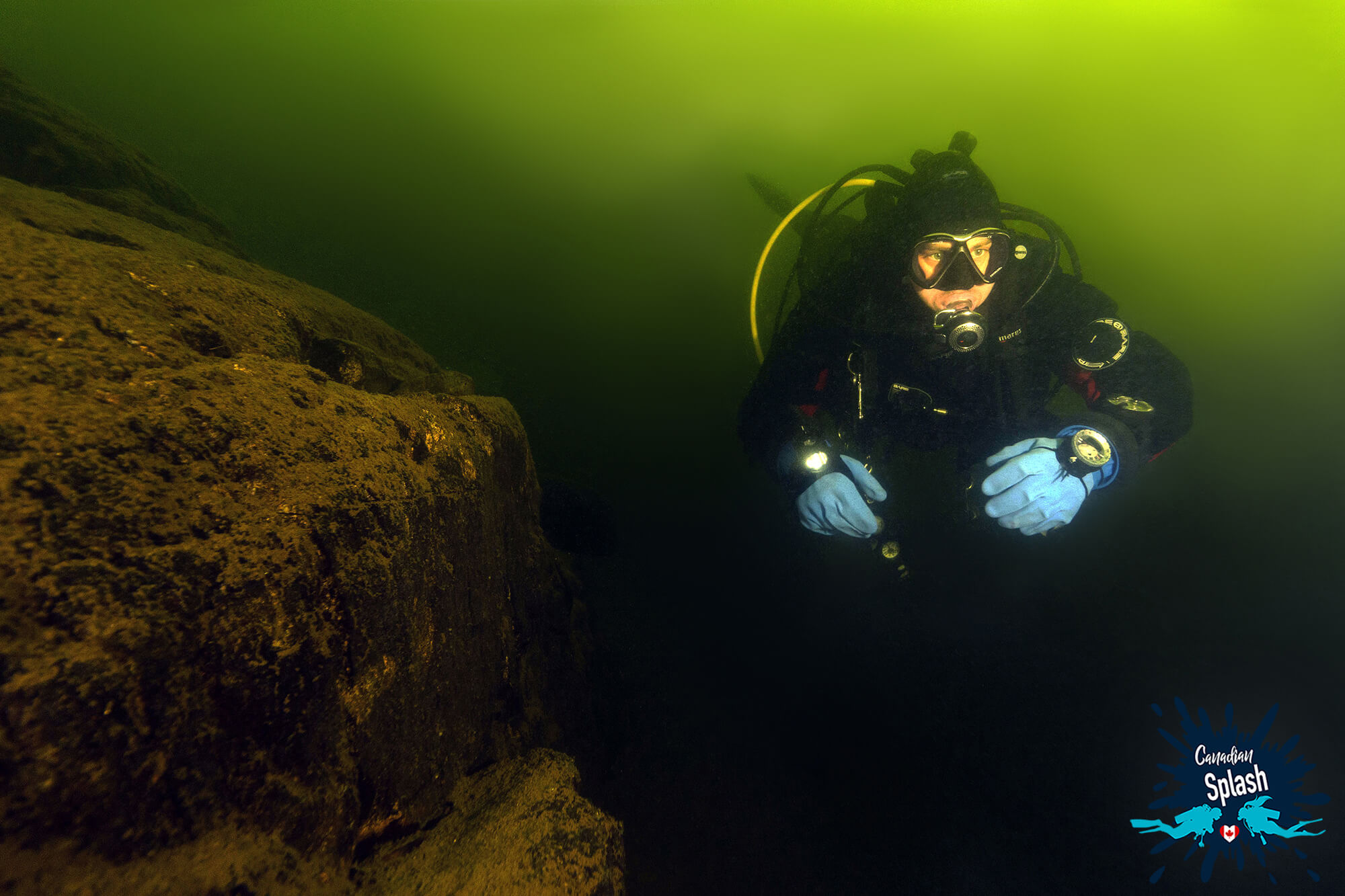
Following the wall, divers will discover miscellaneous objects such as rope, waterlogged trees, and sunken metal artifacts.
There are also the usual freshwater lake suspects – bass and perch – fish that are fearful yet fearless all at the same time.
Feasting on the rock algae and plant growth, various species of freshwater snails can be observed, some reaching the length of an index finger. Along with the snails, there are also plenty of filter-feeding clams. These bivalves can have an appeasing splash of green and yellow coloration and are always anchored to the mud bottom drawing in small particulate matter.
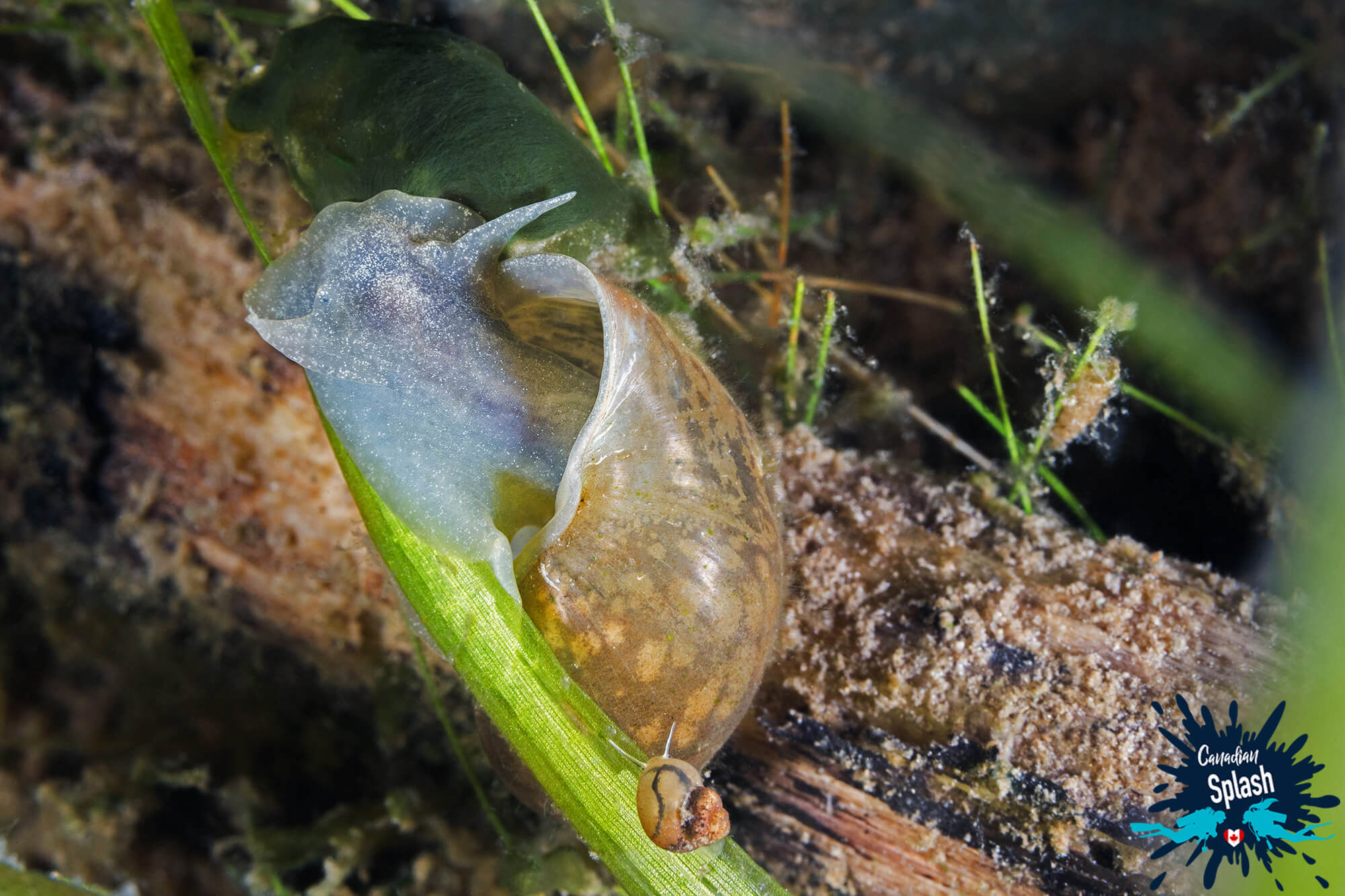
In the deeper colder section of the dive, there are huge numbers of transparent shrimp hidden in the many rocky fissures. The fun thing with these shrimp is that they seem to almost carelessly dance up and down the rock face until you light them up with a dive torch, at which time the scamper for cover.
One species of creature, we hadn’t expected to see was a freshwater hydroid. We found colonies of hydroids on decaying organic things such as logs and rotting plant matter. These creatures were light pink and made up of a stem and wispy tentacles blowing carelessly in the water in search of food.

The last leg of the dive ended in Lake Temagami’s buzzing wetlands – the kidneys of the planet.
More than just plants and animals, wetlands are tremendously productive ecosystems providing a myriad of services to society worldwide. Wetlands bring balance to our natural environment. They are effective regulators of water protecting land in both flood and drought situations. They also stabilize the soil, holding it in place and preventing erosion. Within that soil, wetlands trap sediments, which help create a rich, fertile habitat for plants and animals.
Float and poke around at the plants, animals and invisible bacteria in these thriving ecosystems. Savor how they filter the water, capturing nutrients like phosphorus, which contributes to harmful algal blooms and acting as carbon and greenhouse gas sinks.
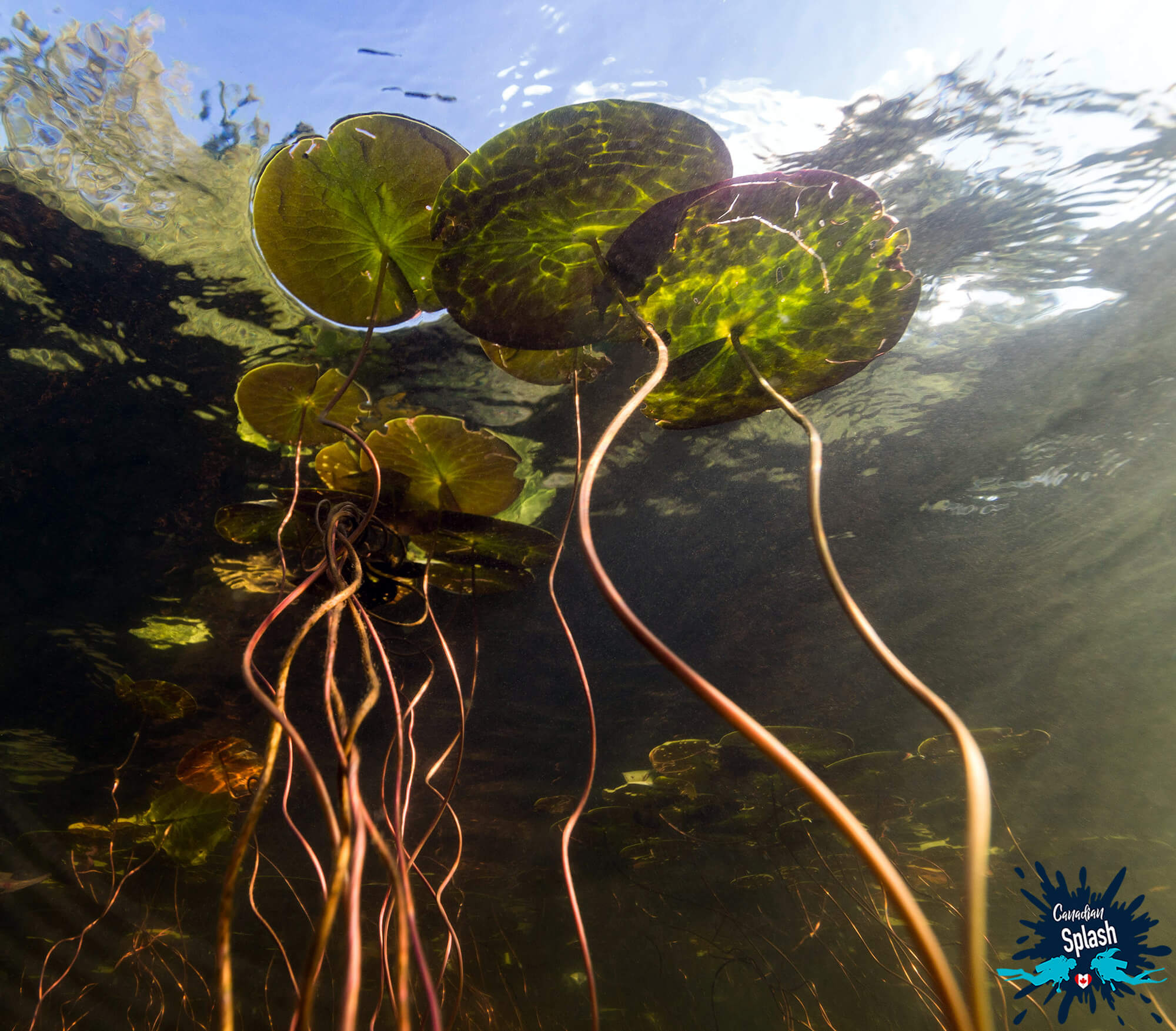
Fairbank Provincial Park is a 105-hectare park with waterfront camping and a mixture of electrical and non-electrical sites. This Ontario Park is located at the edge of the Sudbury Basin.
At 62 kilometers long, 30 kilometers wide and 15 kilometers deep, the Sudbury Basin is the third-largest (and one of the oldest) known impact crater on Earth. Formed 1.849 billion years ago, the crater resulted in a high density of metal deposits in the area. As such the region is one of the world’s largest suppliers of nickel and copper ores which are found towards the outer rim of the basin.
Thanks to the high mineral content in the soil, the Sudbury Basin is also among the best agricultural land in Northern Ontario.
Scuba Diving Fairbank Provincial Park
Wa-Shai-Ga-Mog is the original name of Fairbank Lake and the Ojibway word for “clear water”. The spring-fed lake reaches a maximum depth of 43 meters (141 feet) and is home to several species of fish including minnows, perch, pike, trout, suckers, stickleback, sunfish and sculpin.
There is also a HEALTHY population of crayfish, which we found in large quantities scattered between rocks.
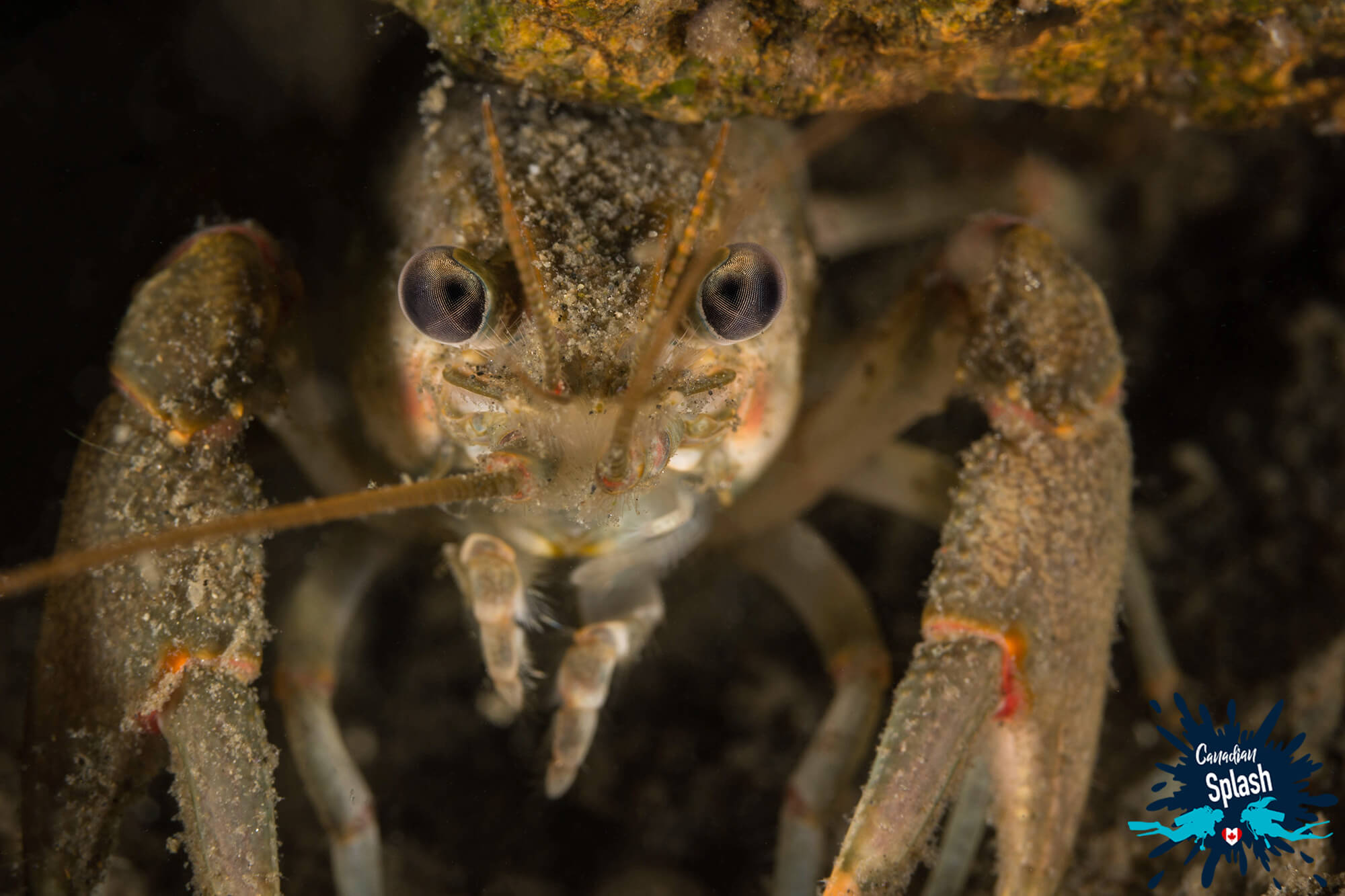
To best explore Fairbank Park’s underwater offerings there is no better place to start your dive than at the provincial park’s only beach. Looking at the water of the lake, most days it’s possible to see for over 8 meters (26 feet).
From the sandy beach, divers can either explore the left-hand or right-hand side, both interesting dive options.
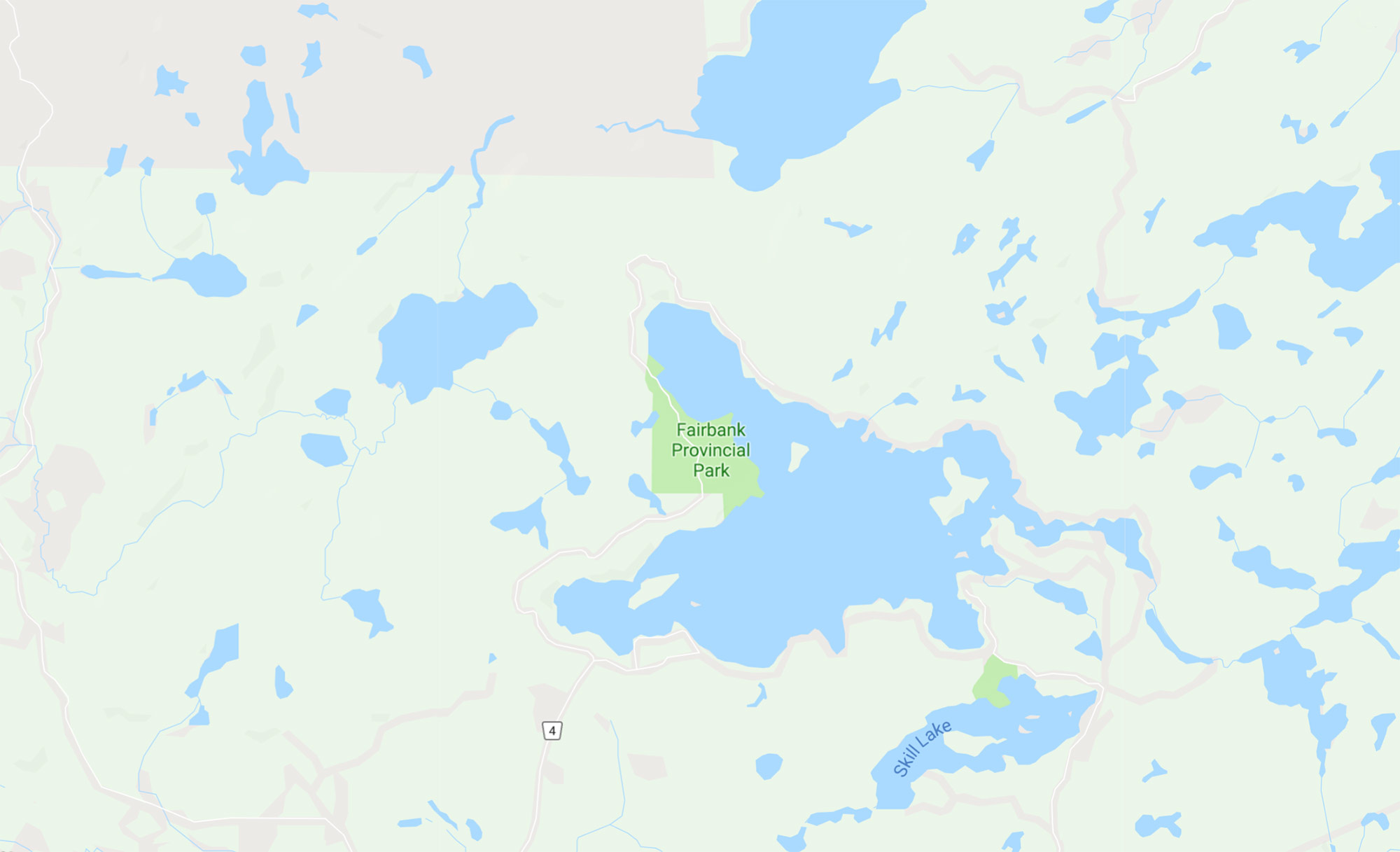
Where to Dive in Fairbank Provincial Park
GPS Coordinates: 46.469807, -81.435371
Address: 696 Park Rd, Worthington, ON P0M 3H0, Canada
Dive from the beach and head either direction for interesting things to see.
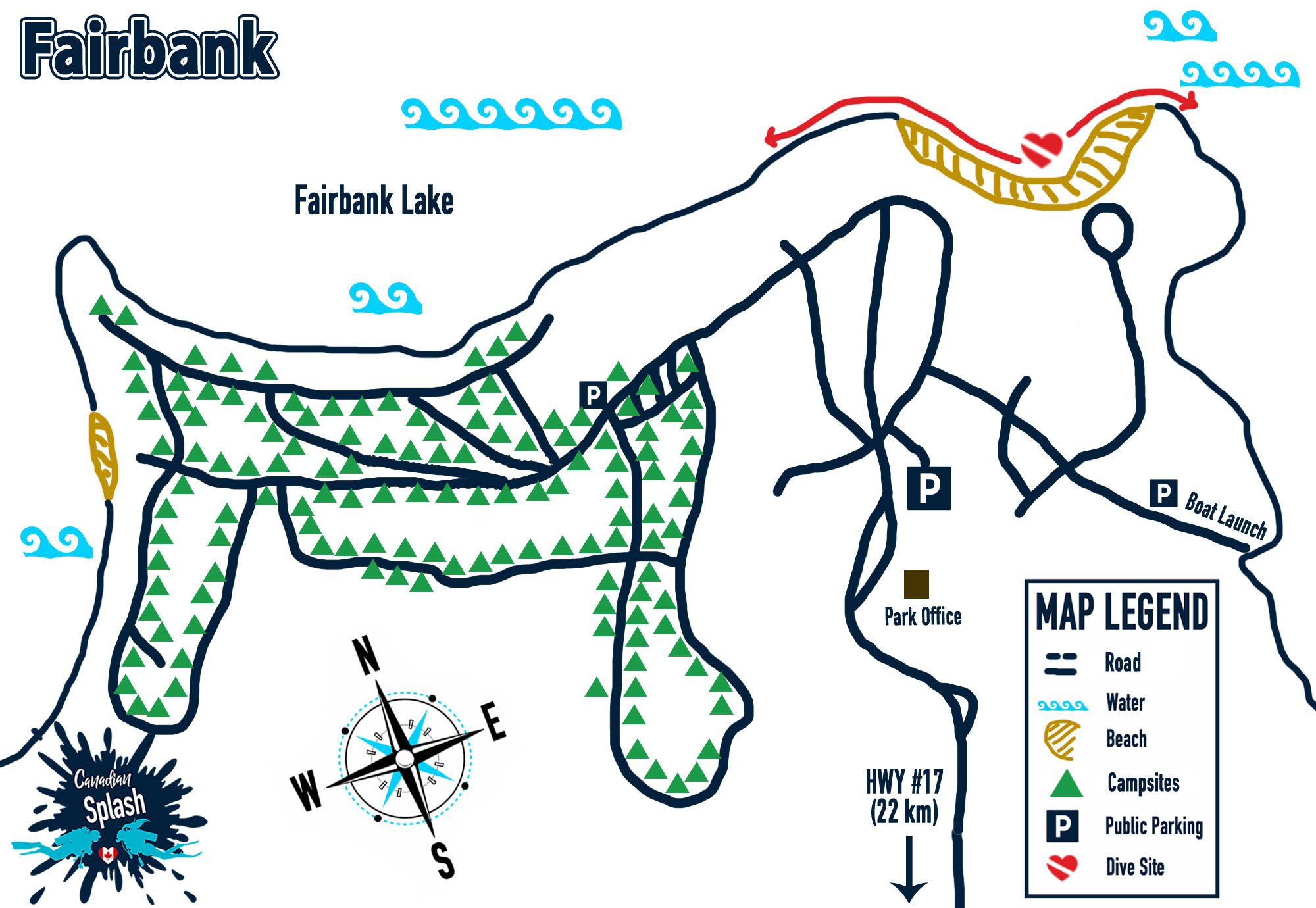
The bottom of the lake is made up of coarse sand in the immediate beach vicinity but eventually changes to larger stone size rocks. At about a depth of 7-9 meters (25-30 feet) the rocks disappear and the bottom becomes a fine muddy particulate that is easily disturbed.
While large fish species do inhabit Fairbank Lake, most of the fish wildlife sightings are of smaller juveniles lurking in the plant-filled shallows.
Apart from small fish, divers are also practically guaranteed to spot crayfish. This lake is BRIMMING with these freshwater crustaceans. Keep your eyes peeled for trickles of movement. Crayfish are reclusive critters that love to seek refuge in and around rocks.
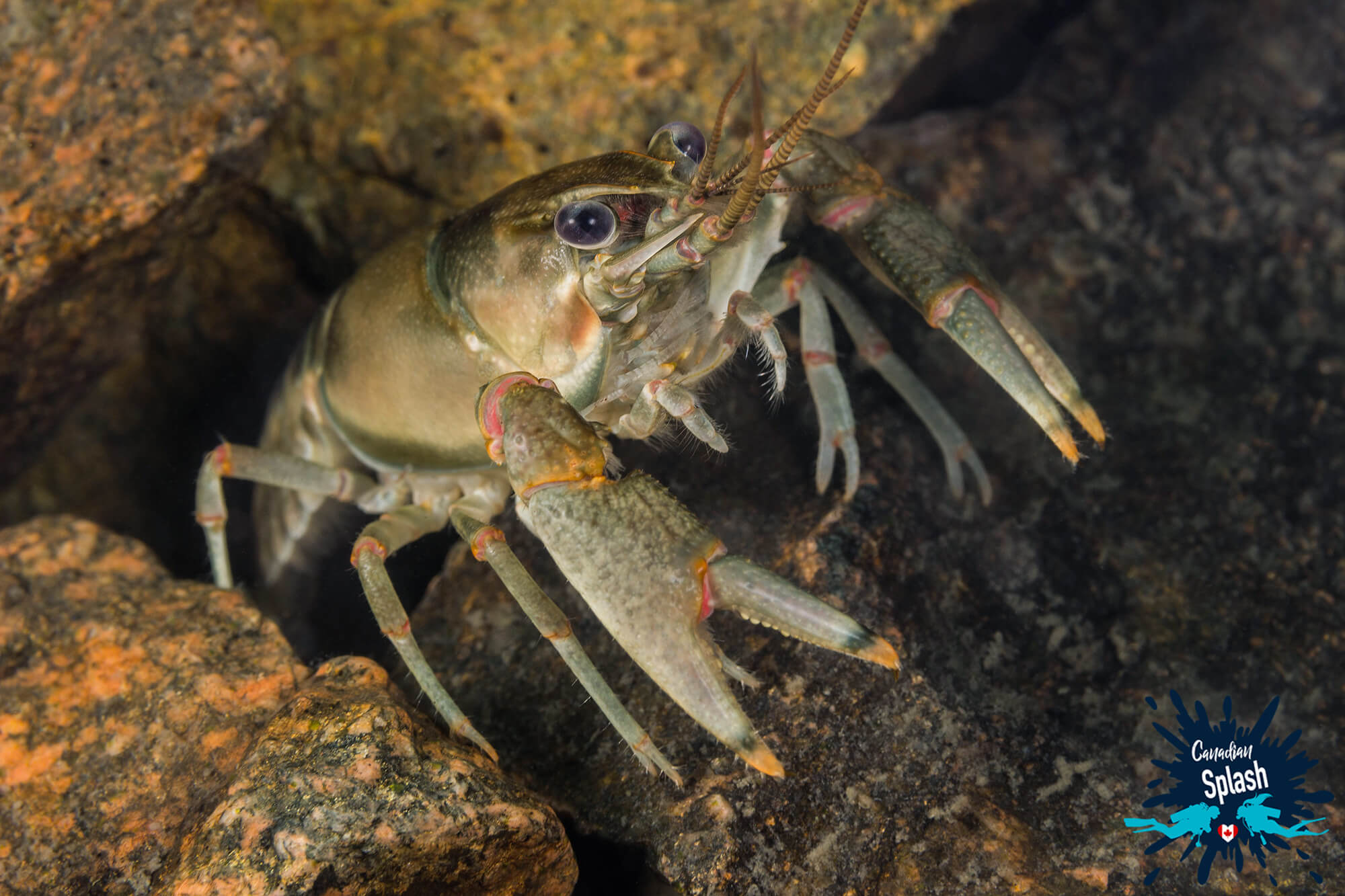
Samuel de Champlain provincial park is a 2550 hectare park located on the historic Mattawa River fur trade route. There are over 200 campsites in Samuel de Champlain and nice swimming beaches on Moore Lake. There are also several sets of rapids trickling out from Moore Lake down the Amable du Fond River and joining the Mattawa.
Not only does the Mattawa River hold significant importance in early European exploration but this river was a major highway for Native Indians and voyageurs as well. In fact, it seems that everyone who made Canada what it is today once traveled this river.
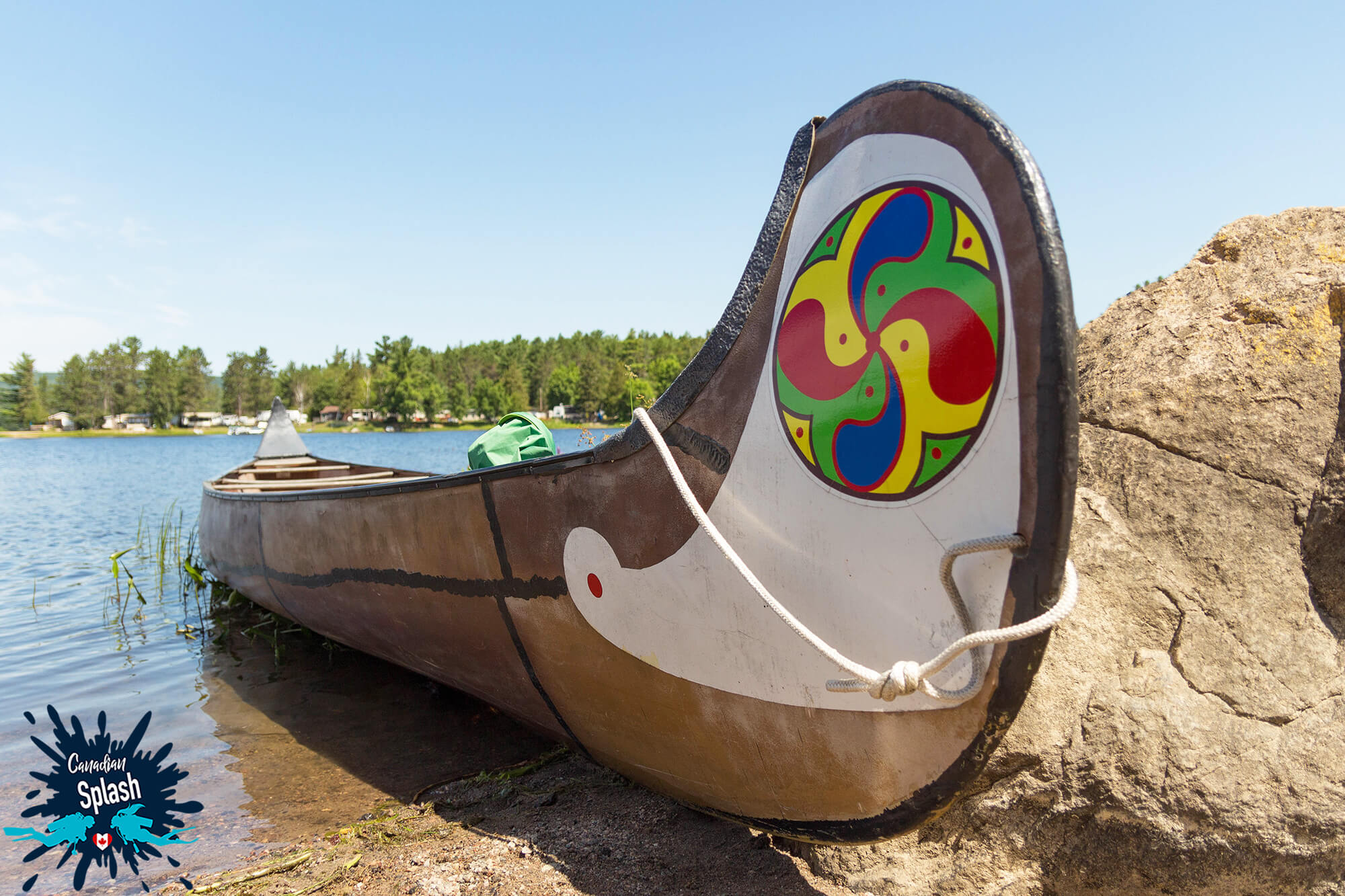
Interesting Information: Voyageurs were French Canadians who engaged in the transporting of furs over long distances by canoe during the fur trade years. The voyageurs were regarded as legendary and were heroes celebrated in folklore and music.
Scuba Diving Samuel de Champlain Provincial Park
The Mattawa River in Samuel de Champlain park isn’t exactly known for its heart-pumping diving.
Heading into the copper shallows of the Mattawa River, we were unsure of what we would find – would it be a dark, barren river bed or would we find sunken treasures amid the rocks attesting to the regions colorful past?
Due to the shallow nature of the river, we decided to do our dive at the park’s boat launch.

Where to Dive in Samuel de Champlain Provincial Park
GPS Coordinates: 46.300374, -78.875027
Address: 6905 Hwy 17, Mattawa, ON P0H 1V0, Canada
Dive from the boat launch and head right. Don’t forget your dive buoy!
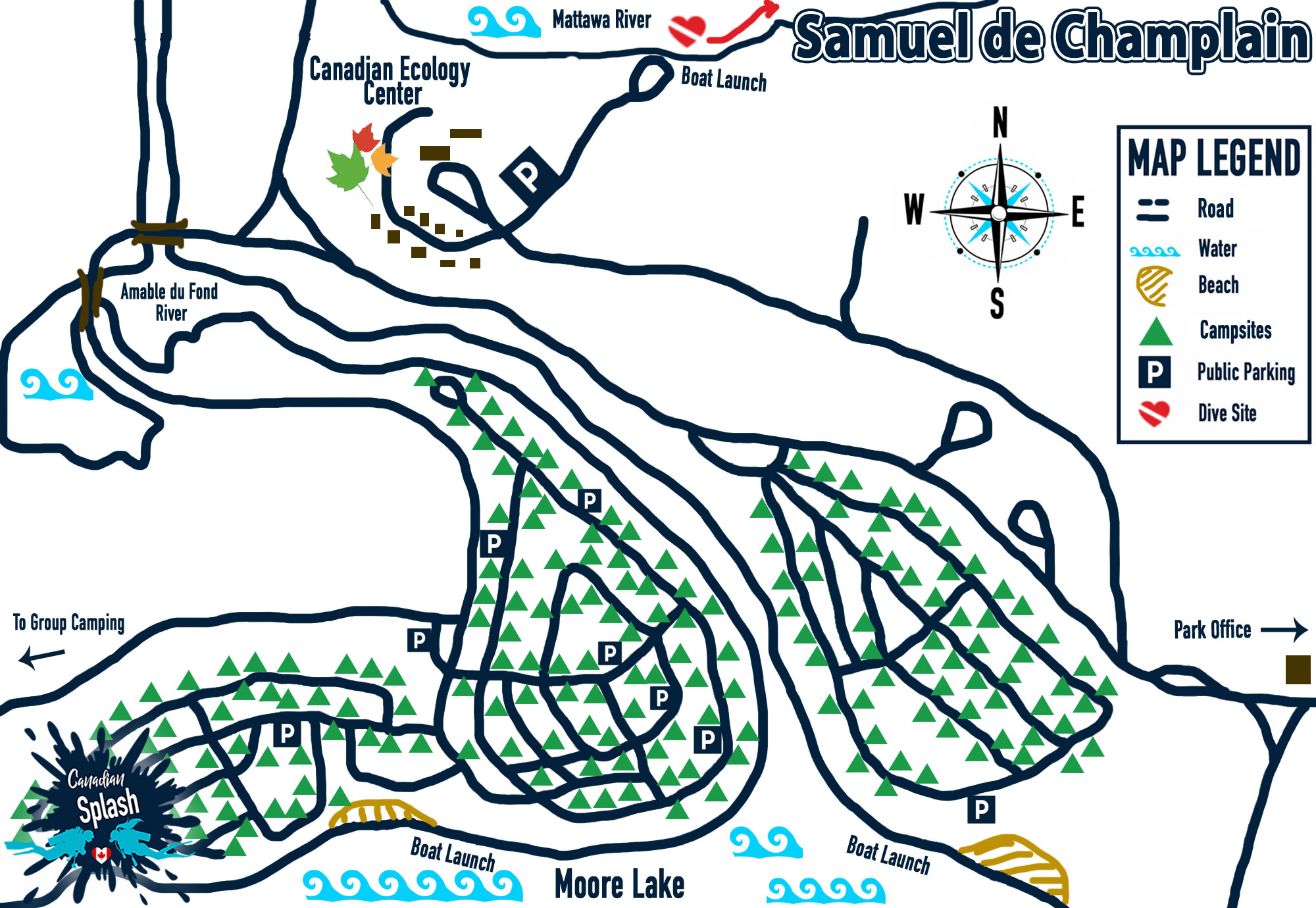
Divers can back their car down to the water’s edge and unload gear before driving up to the parking area. Once ready, enter the water with caution as the rocks can be slippery and there is a slight drop off to the left of the boat launch.
The water is very shallow if you plan your scuba diving route left towards the base of the rapids from the boat launch, therefore we suggest directing your dive to the right, downriver, keeping in mind that there will be a slight current on the way back.
In the rocky shallows that are roughly 2 meters (6-8 feet) deep, look around for small fish, frogs, and salamanders under rocks and in the patches of vegetation. If you’re lucky, like us, you might even find bits and pieces of old logging artifacts.
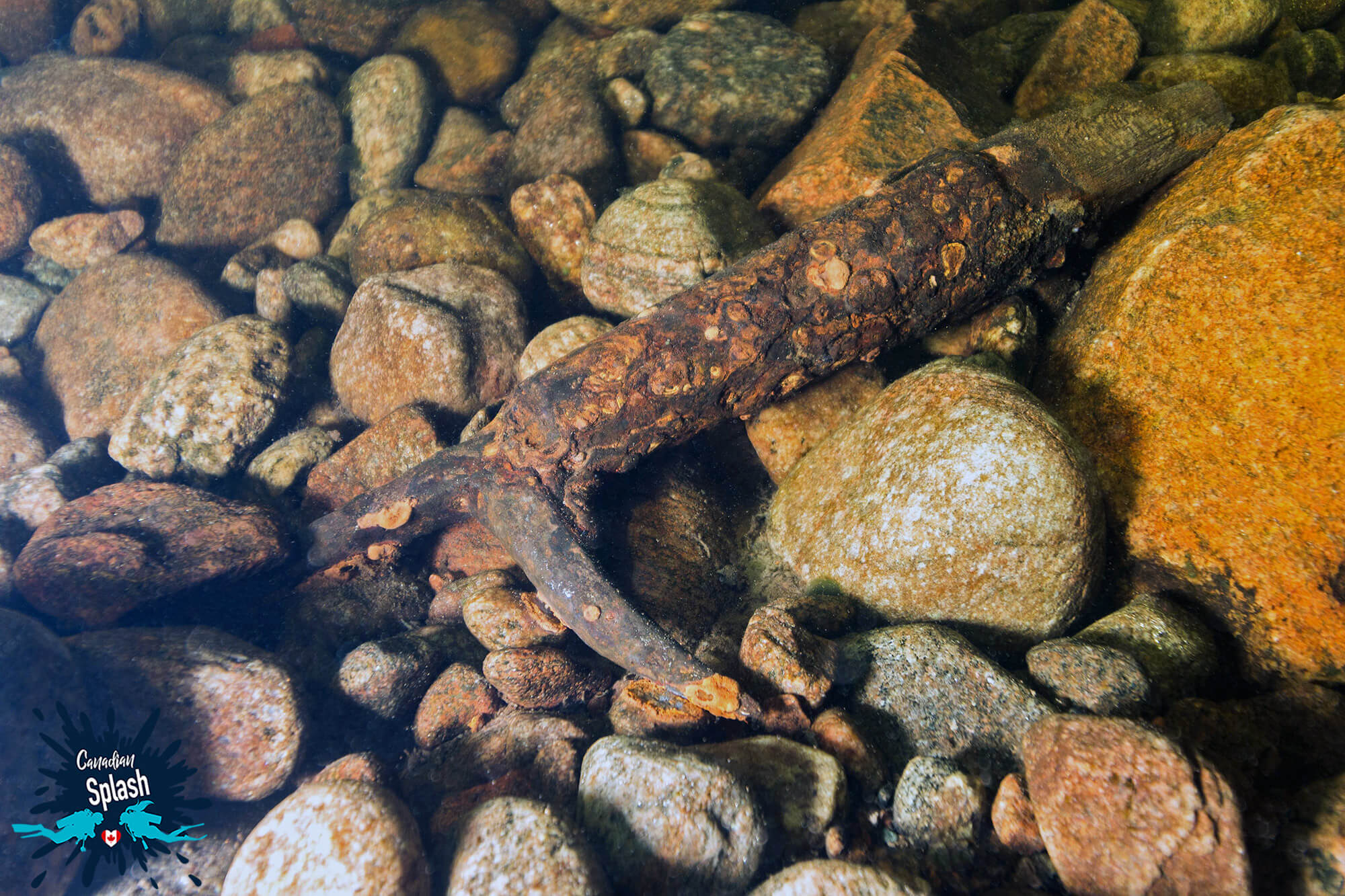
When you get bored of poking around the middle of the river, another good option is to check out the left or right-hand sides.
The aquatic plant life, fallen trees and mini wetlands along the riverbank make for very interesting photo opportunities. Divers will find lots of vivid lime green freshwater sponges encrusting rocks and tree branches. They will also find silvery baitfish and sizeable bass seeking refuge in this area.

Further down-river, the water gets slightly deeper.
The bottom changes from 2 meters (6-8 feet) to about 4.5 meters (15 feet). The riverbed is also studded with large boulders which divers will need to navigate in between. Around the boulders, lots of perch and bass can be found, and they will curiously follow divers entranced by their bubbles and lights.
Not only was this the deepest part of the dive, but it was also my favorite. I loved how close the large fish allowed us to get and the sizeable boulders made for an interesting aquascape.
If you’re interested in a long underwater swim, I’m sure the river drops off even deeper if you keep heading out to the main part of the river. Don’t be afraid to explore further but bear in mind the long against-the-current swim back to the boat launch.
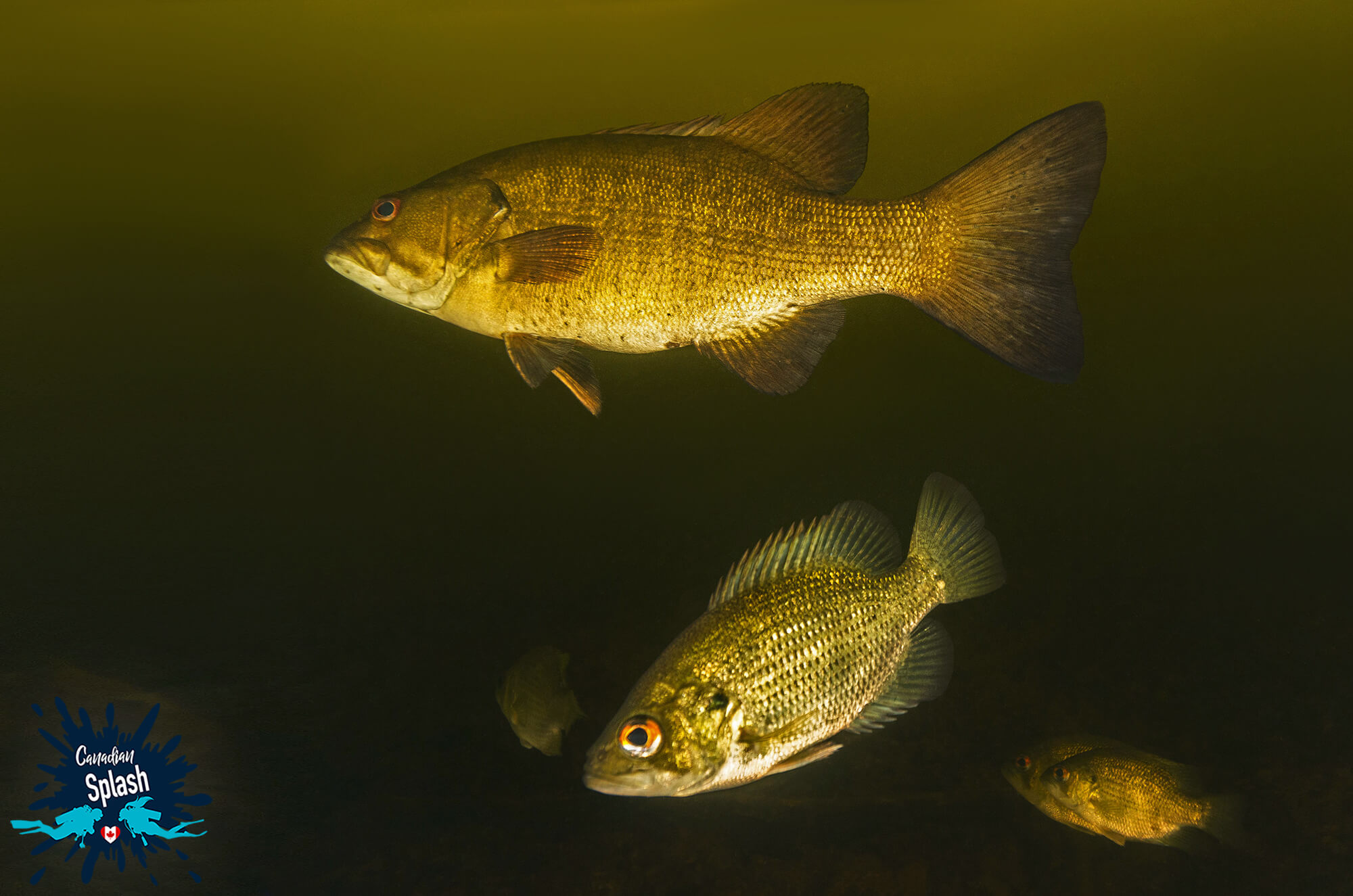
Whether you’re being transported you back in time to the long-forgotten logging history of Marten River or exploring the Voyageur fur-trade route, Ontario Parks has a lot to offer both above and below the water.
By far our favorite Ontario Parks dive site was Finlayson Point and Fairbank. Visibility and animal diversity at these places was much more impressive than the other two. That and the lake allowed for deeper dives.
Overall, the Ontario Park lakes definitely took me by surprise. While not comparable to dive sites like Tobermory and the Thousand Islands region of Ontario, it helped me look at familiar childhood camping locations in a fun new way. It shook me out of my comfort zone reminding me that sometimes the most unexpected diving locations are the ones sitting right under your nose.
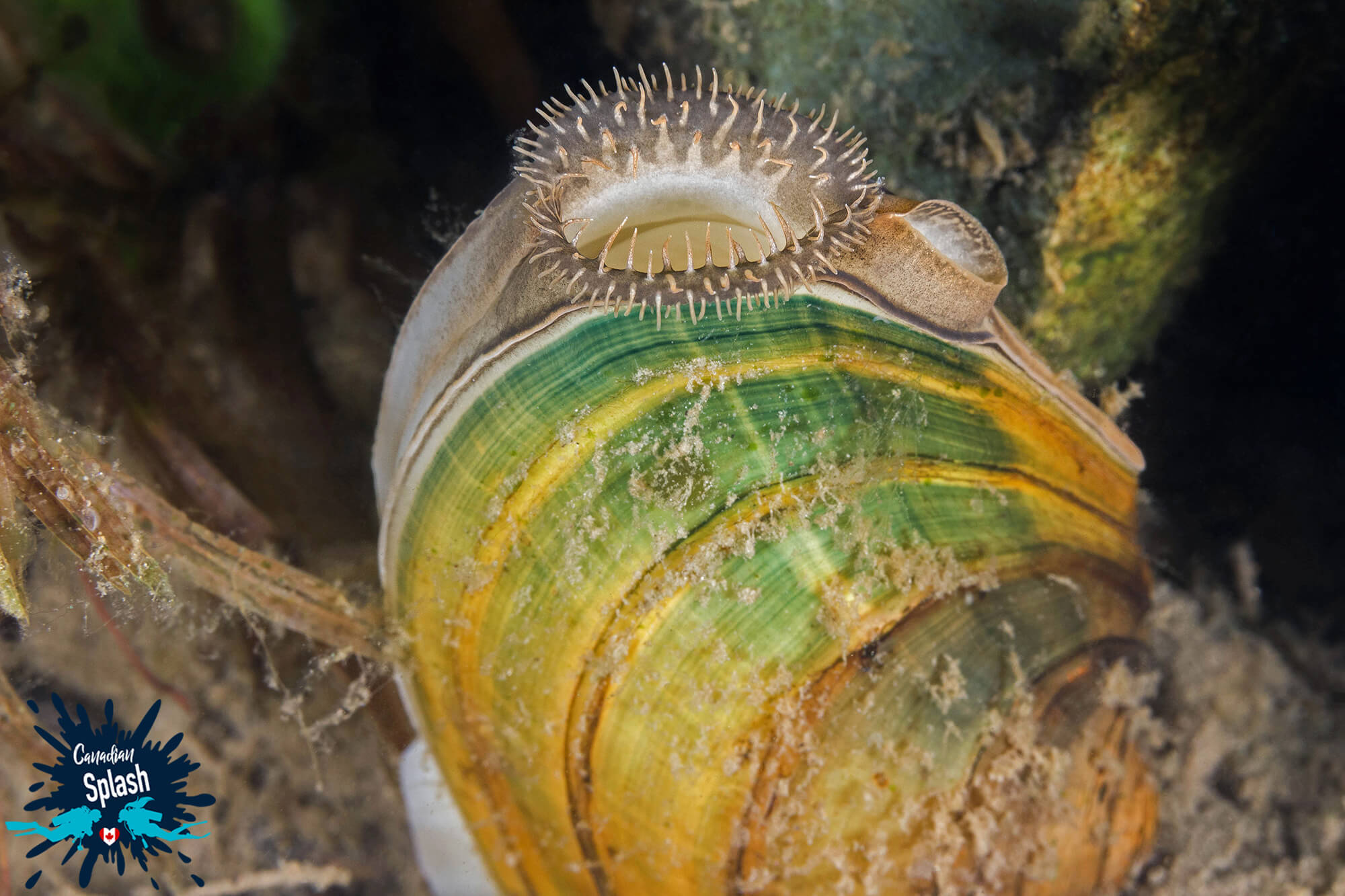
Have you ever camped at an Ontario Park? Which one do you think we should visit and scuba dive next?
Writers Note: This scuba diving post was sponsored by Ontario Parks as a part of our Canadian Splash photography and dive initiative. A big thank you goes out to Bonny Perron for assisting and photographing our land-based dive prep.
Additionally, this post may contain affiliate links. We will make a small commission if you make a purchase through one of these links, at no extra cost to you. See full disclosure and disclaimer policy here.
Want to explore more diving in Ontario? Take a look at H2O Ontario to discover more interesting Ontario-based dive adventures.

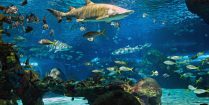
Do you want to try diving inside an aquarium? This unique Canadian location lets you experience scuba diving and up-close animal encounters like never before.

While most people were at home celebrating Mother’s Day, the North Bay Scuba Club donned dive gear and took to the water to clean up the local marina.
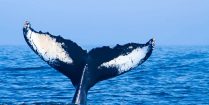
Find out how a couple of scuba divers made a gigantic snow sculpture to try and turn the tides on plastic use in the city of North Bay.
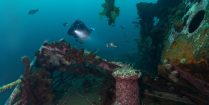
Do you enjoy cold water wreck diving? This dive destination will let you experience the best shipwrecks and scuba diving opportunities on the Canadian east coast.

Saint Andrews by-the-sea may be small in size, but this summer town packs a pretty big dive punch for scuba divers willing to brave the Bay of Fundy's tides.
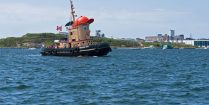
Nova Scotia is full of cold water diving opportunities, particularly around shores of Halifax.
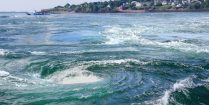
Submerging into the cold waters of Deer Island is one of the best ways to appreciate the vibrant array of color the Bay of Fundy hides beneath her surface.
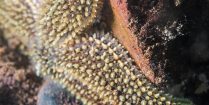
Sometimes finding a good dive spot is easier said than done. Shore diving around Saint John, New Brunswick is a testament to how unpredictable the Bay Fundy can be.
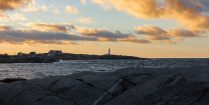
When diving in Nova Scotia where do you even begin? Do you start in Halifax the province's capital or do you wander beyond to see what the surrounding area has to offer?

When it comes to getting outside and immersed in nature, Ontario Parks is at the top of the list. Not only do the parks boast magnificent nature, but it's hundreds of thousands of lakes make it a real treat for those who love the water.
